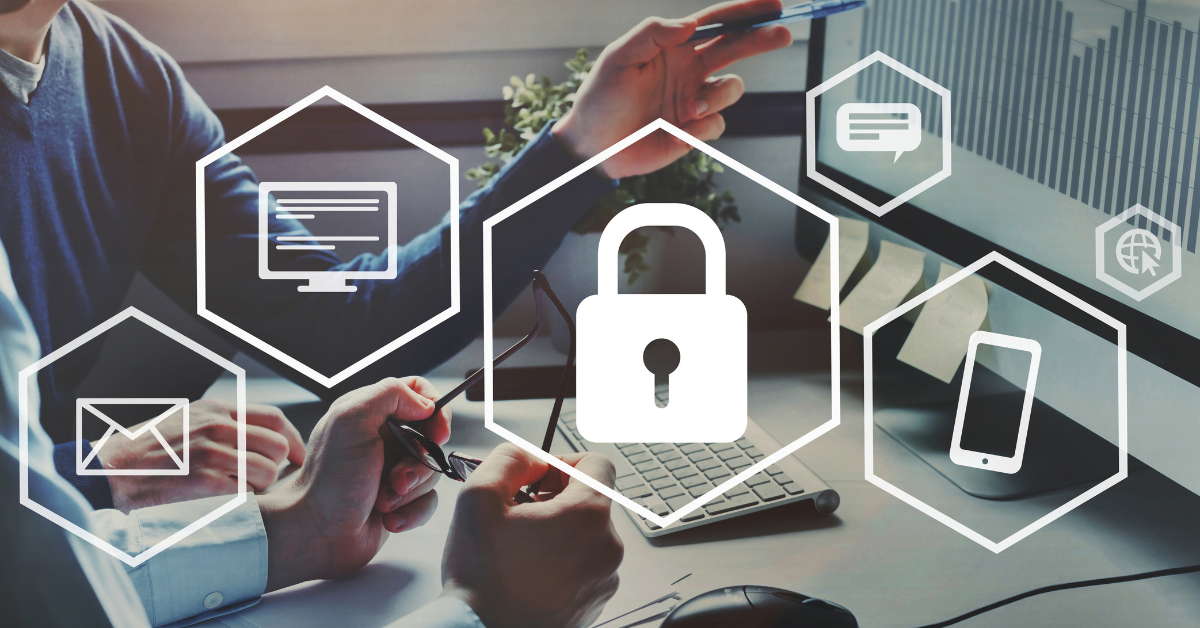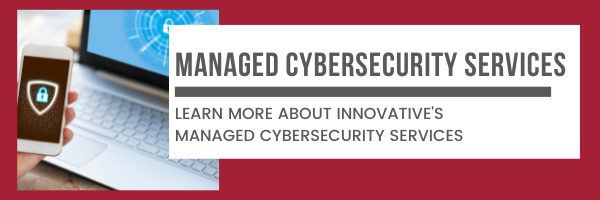11 Cybersecurity Layers for Your Small Business
It’s time to continue with our Cybersecurity Awareness Month content! If you missed our first article on business email compromise, you can check it out here.
You’ve probably heard about the importance of having multiple layers of cybersecurity, but what are those layers specifically, and what do they do? Today, we will break down 11 cybersecurity layers crucial to protecting each piece of your business’s IT infrastructure.
Before we proceed, we’ll note our bias as a managed service provider (MSP). While we offer the services below, we don’t intend for this article to be a sales pitch. This content is focused on informing you of IT best practices so you can better inform the cybersecurity strategy in your business.
As always, please consult an IT professional before implementing any technological changes in your business.
11 Layers of Cybersecurity
1. Business Continuity Solution
If there’s one hard truth in the technology world, it’s that things will go wrong from time to time. This raises the importance of being proactive in your approach. If your business is experiencing a cybersecurity incident and has lost access to its data, it’s vital that you’re able to quickly recover your data from a specific point in time so that you can continue working.
A managed business continuity solution allows your business to operate from the cloud or local backup device in a timely manner, so you don’t have to worry about an extended period of downtime.
2. Vulnerability Management
The bad guys are always looking for a way in. One way they can do this is by exploiting software vulnerabilities, which are flaws or weaknesses in a computer system that could allow an attacker to gain unauthorized access or control of an application or operating system.
The best way to stay vigilant against these attacks is to implement a vulnerability management solution that protects your network and its endpoints by proactively evaluating the software and configurations of all devices to identify, evaluate and remediate exploitable vulnerabilities and security weaknesses.
3. Intrusion Protection and Intrusion Detection
Intrusion detection and intrusion protection systems (IDS/IPS) monitor network traffic to help prevent external threats from gaining access to your environment. This is generally done through a piece of software on a firewall.
4. Spam and Phishing Prevention
The easiest way for a cyber threat to gain access to the environment is for you to let them in yourself. A good email filtering service can help prevent these attempts from reaching your inbox and can be tailored to your business so you receive legitimate emails.
5. Managed Two-Factor Authentication
When we talk about additional layers of cybersecurity, managed two-factor authentication is one of the most crucial. If the bad guys get a hold of your login credentials, 2FA is the last line of defense protecting your business and data, and it’s highly effective in doing so.
We recommend that your IT provider manage your 2FA solution so that they can ensure it is configured correctly. Third-party 2FA solutions are effective, but your IT team will unlikely be able to assist you if your 2FA device becomes lost or stolen.
6. Managed Detection and Response
Managed detection and response (MDR) combines technology and human expertise to seek out, monitor and respond to threats. An MDR solution usually monitors for threats 24/7/365, with the singular goal of preventing them and quickly rectifying them when they occur. MDR will always cover your endpoints (computers, servers), and some MDRs also protect cloud services.
7. Privileged Access Management
A Privileged Access Management (PAM) tool specifies policies and monitors privileged accounts to ensure that there is no suspicious activity. Depending on their needs, this can be configured differently for each business and can help prevent bad actors from accessing sensitive data or downloading malicious files.
8. Password Manager
Passwords should be complex and shouldn’t be shared with anyone. At the same time, you shouldn’t write them down or reuse the same ones. A password manager can make this easier by securely storing your unique passwords and having them readily available when logging in. Some password managers can even help ensure your passwords are up to complexity standards.
9. Dark Web Monitoring
Dark web monitoring scans the dark web (internet content that requires specific software or authorization to access, usually for illegal activity) for any passwords that have been stolen and are for sale. This can create larger issues if you reuse passwords across multiple websites.
10. Security Awareness
Security awareness training can help train and educate your organization on the latest cybersecurity threats and trends. This solution is especially helpful in minimizing the effectiveness of phishing emails.
11. Third Party Patching
Up-to-date software can help ensure productivity and security. Through third-party patching, your IT partner can ensure you’re receiving the latest updates for your software and applications and that those updates are compatible with your systems and installed correctly.
Implement Cybersecurity in Your Business
These 11 layers will look different for each business and IT provider. Everyone will have their vendor preferences, and each company will need its solutions configured differently to fit its needs. Don’t hesitate to contact your IT provider to see what offerings they have so your business can have its bases covered.





